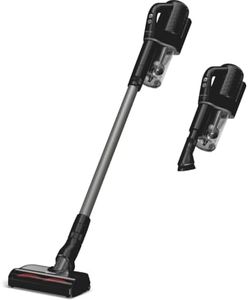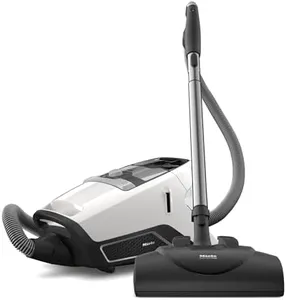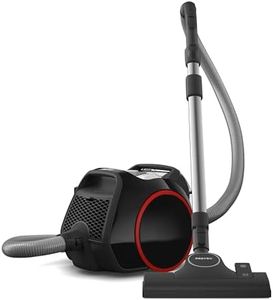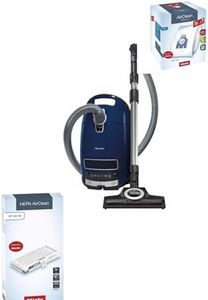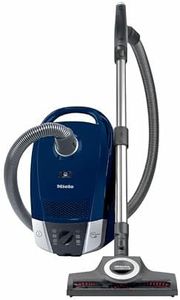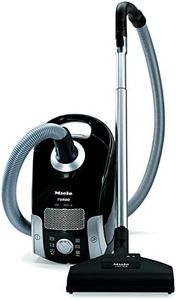We Use CookiesWe use cookies to enhance the security, performance,
functionality and for analytical and promotional activities. By continuing to browse this site you
are agreeing to our privacy policy
10 Best Miele Vacuum
From leading brands and best sellers available on the web.Buying Guide for the Best Miele Vacuum
Choosing the right vacuum cleaner can make a big difference in how easy and effective your cleaning routine is. When looking at vacuums, especially from a reputable brand like Miele, it's important to focus on the features that match your home, lifestyle, and cleaning needs. Think about the types of floors you have, whether you have pets, and how often you clean. Understanding the key specifications will help you find a vacuum that feels just right for you and your space.Suction PowerSuction power refers to how strongly the vacuum can pull in dirt and debris. This is important because higher suction means better cleaning, especially on carpets or for picking up pet hair. Suction power is often measured in watts or air watts. Lower suction is fine for hard floors and light cleaning, while medium suction works well for mixed surfaces. High suction is best for deep carpets or homes with pets. Choose a vacuum with adjustable suction if you have a mix of surfaces, so you can tailor the power to your needs.
Filtration SystemThe filtration system determines how well the vacuum traps dust, allergens, and tiny particles. This is especially important if you have allergies or pets. Basic filters catch larger particles, while HEPA filters can trap very fine dust and allergens. If you or your family members have allergies or asthma, look for a vacuum with a HEPA filter. For general cleaning, a standard filter may be enough, but for sensitive households, advanced filtration is a must.
Bagged vs. BaglessVacuums come in bagged and bagless designs. Bagged vacuums collect dirt in a disposable bag, which is easy to remove and less messy, making them a good choice for allergy sufferers. Bagless vacuums use a dust container that you empty and reuse, which saves on buying bags but can be messier to empty. If you want less maintenance and cleaner disposal, go for bagged. If you prefer not to buy replacement bags and don't mind a bit of dust when emptying, bagless might suit you.
Weight and ManeuverabilityThe weight and maneuverability of a vacuum affect how easy it is to use, especially if you have stairs or large spaces. Lightweight vacuums are easier to carry and move around, making them ideal for multi-level homes or people who want less physical effort. Heavier models may offer more power but can be harder to move. If you have mobility concerns or lots of stairs, prioritize a lighter, more maneuverable vacuum.
Attachments and AccessoriesAttachments like crevice tools, upholstery brushes, and turbo brushes expand what your vacuum can do. These are important if you want to clean furniture, curtains, or tight spaces. Some vacuums come with a wide range of tools, while others have just the basics. Think about your cleaning needs—if you have pets, look for a pet hair tool; for lots of furniture, an upholstery brush is helpful. Choose a vacuum with the attachments that match your home and cleaning habits.
Noise LevelNoise level is how loud the vacuum is when running, usually measured in decibels (dB). Quieter vacuums are more comfortable to use, especially in apartments or if you clean while others are home. Lower noise (around 60-70 dB) is gentle on the ears, while higher levels can be disruptive. If you value a peaceful environment, look for a vacuum with a lower noise rating.
Corded vs. CordlessCorded vacuums plug into the wall and offer continuous power, making them good for large areas or long cleaning sessions. Cordless vacuums run on batteries, offering more freedom to move but limited by battery life. If you have a big home or want to clean for longer periods, corded is best. For quick cleanups or smaller spaces, cordless can be more convenient.
